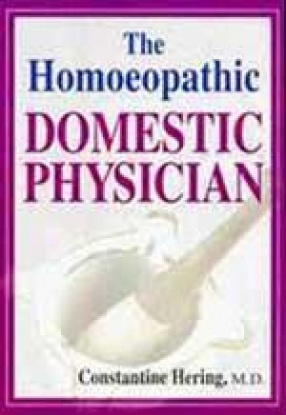Remedies When Homoeopathy Viewed Diagnostically (a scientific approach in Homoeopathy)
Conventionally, Homoeopathy is not a system of treatment that can be viewed diagnostically. It should be symptomatic when it is Homoeopathy. But nowadays a disease can be recognised easily by some diagnostic tests, and looking at the disease through symptoms becomes secondary. The aim behind publishing this book is to find out a reasoning based approach in Homoeopathy to the disease-drug relation, so that any physician may find out the remedy of a disease on his own, if the disease is diagnosed and the reasoning for selecting the remedy for it is correct, without going through the compilation of symptoms. In this book, the author has tried to find out ways and wanted to show that how the approach of the treatment will be ‘diagnostic’ in nature. This book is a merger of two parts of the well-known book named, ‘Homoeopathy viewed Diagnostically’ by the author. In this edition it is revised again, some topics have been added and everything is made available in a single attractive folder. The contents of this book are a research work by the author who has been practising Homoeopathy for more than 40 years. His academic study in Homoeopathy had been preceded by his another academic study in ‘Applied Mathematics’ in postgraduation under C.U., which certainly influenced him to look Homoeopathy from a different angle which is ‘diagnostic and scientific’ in nature. How the author has perceived Homoeopathy? To him, it is not the matter which remedy is mentioned for a disease in the materia medica but he used to question, whether ‘it’ or ‘which one’ should be the remedy, diagnostically? Because, a remedy must have a diagnostically proven ‘disease-drug relationship’ for its effectiveness and curability only then the method will be considered as ‘scientific’. The way he established the ‘disease-drug relationship’ in this book bears the essence of modern system of treatment and Homoeopathy can never be tagged as ‘unscientific’ anymore.
Get it now and save 10%
BECOME A MEMBER







Bibliographic information